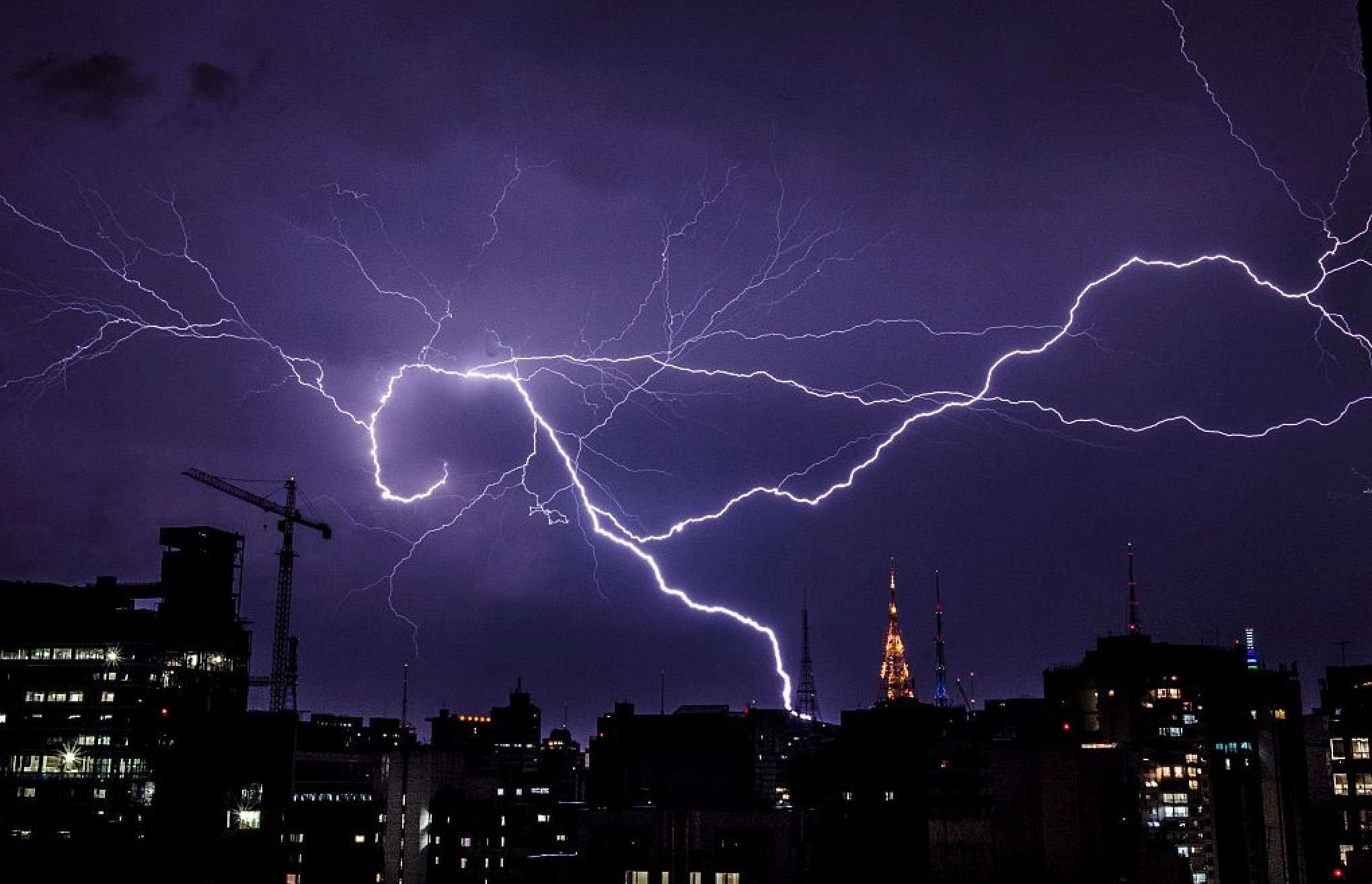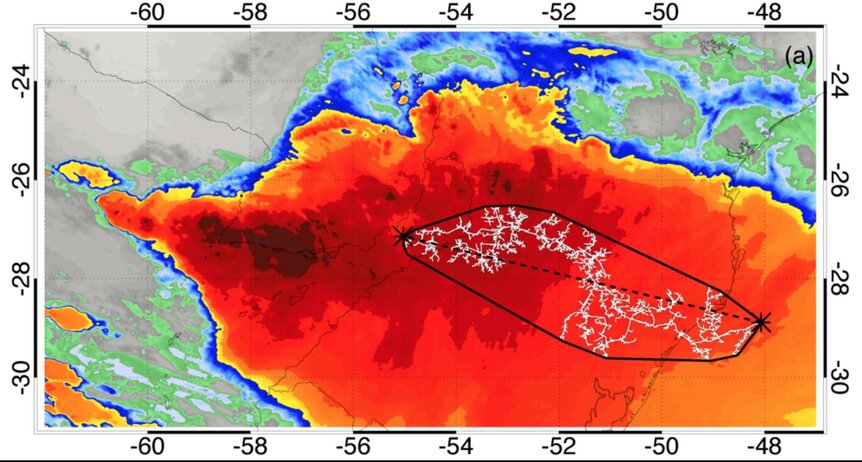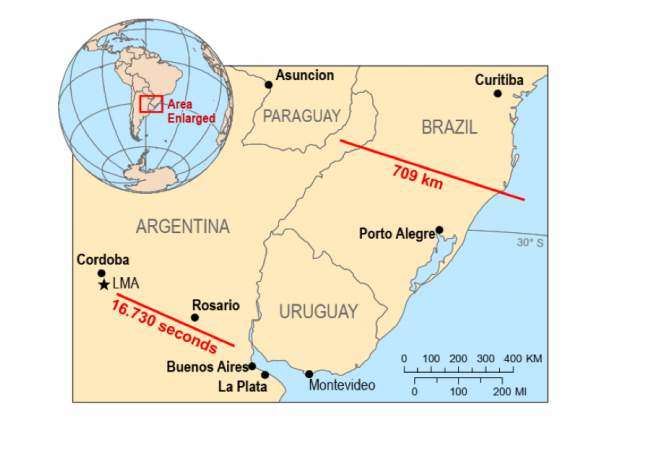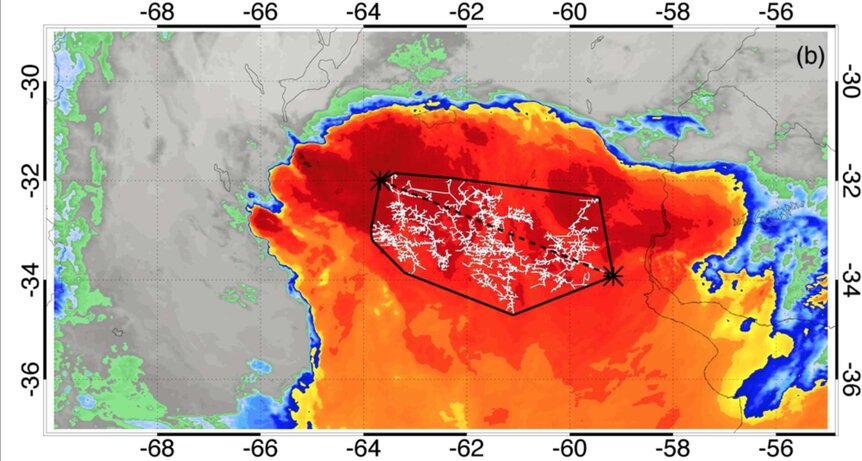Create a free profile to get unlimited access to exclusive videos, sweepstakes, and more!
Shocking 440-mile-long megaflash lightning bolt shatters world record

It's official, the United States can no longer brag about hosting the longest lightning strike ever recorded. That claim now belongs to Brazil, whose southern skies were ablaze with jagged arcs of electricity back on Halloween Night, October 31, 2018, when a single 440-mile-long bolt blazed out of the spooky, supercharged atmosphere. That's an astonishing distance that's almost the length of the state of Florida.
In a second world record certification perhaps just as scary, a different megaflash that occurred in northern Argentina on March 4, 2019 just became the longest reported single lightning bolt, after being clocked in at a hair-raising 16.73 seconds.
The data was recently dissected by a special Weather and Climate Extremes committee that maintains official records of global, hemispheric, and regional extremes at the World Meteorological Organization in Geneva, Switzerland.
Both megaflashes (similar to the image above — no ground-based photos of the event were actually captured) were recorded via orbital technology, which you can see in these two thermal images below.
The professional weather watchers studied the two events utilizing new satellite lightning imagery technology to award Brazil and Argentina their electrifying titles. These new records more than double the previous lightning strikes witnessed on June 20, 2007 across 199.5 miles of Oklahoma, and the continuous flash of 7.74 seconds on August 30, 2012 over Provence-Alpes-Côte d'Azur in France.
Employing the lightning mapper installed on the new GOES satellite, meteorologists and scientists were able to detect the lightning strikes from a lofty vantage point in low-Earth orbit rather than relying upon the old ground-based Lightning Mapping Array Networks. The team's findings were published by the American Geophysical Union’s Geophysical Research Letters on June 24, just prior to International Lightning Safety Day on June 28.
“These are extraordinary records from single lightning flash events. Environmental extremes are living measurements of what nature is capable, as well as scientific progress in being able to make such assessments. It is likely that even greater extremes still exist, and that we will be able to observe them as lightning detection technology improves,” said Professor Randall Cerveny, chief investigator of Weather and Climate Extremes for WMO. “This will provide valuable information for establishing limits to the scale of lightning — including megaflashes — for engineering, safety and scientific concerns.”
Space-based lightning mapping allows scientists to measure full flash extent and precise durations of megaflashes over broad geospatial territories. These advanced tools include the Geostationary Lightning Mappers (GLMs) on NASA's R-series Geostationary Operational Environmental Satellites (GOES-16 and 17) — which observed these dazzling new lightning records — and their European counterparts, the Meteosat Third Generation (MTG) Lightning Imager, and China's FY-4 Lightning Mapping Imager.
“This dramatic augmentation of our space-based remote sensing capabilities has allowed the detection of previously unobserved extremes in lightning occurrence, known as ‘megaflashes,’ which are defined as horizontal mesoscale lightning discharges that reach 100s of kilometers in length,” explained lead author Michael J. Peterson, of the Space and Remote Sensing Group at Los Alamos National Laboratory.
Lightning continues to be one of Mother Nature's most dangerous outbursts, with a two-decade average of 51 deaths per year in the United States attributed to deadly lightning bolts, and Wyoming being the worst place to be when stormy skies become electrified. Worldwide totals for fatal strikes range from approximately 6,000 to 24,000 deaths recorded each year.





























